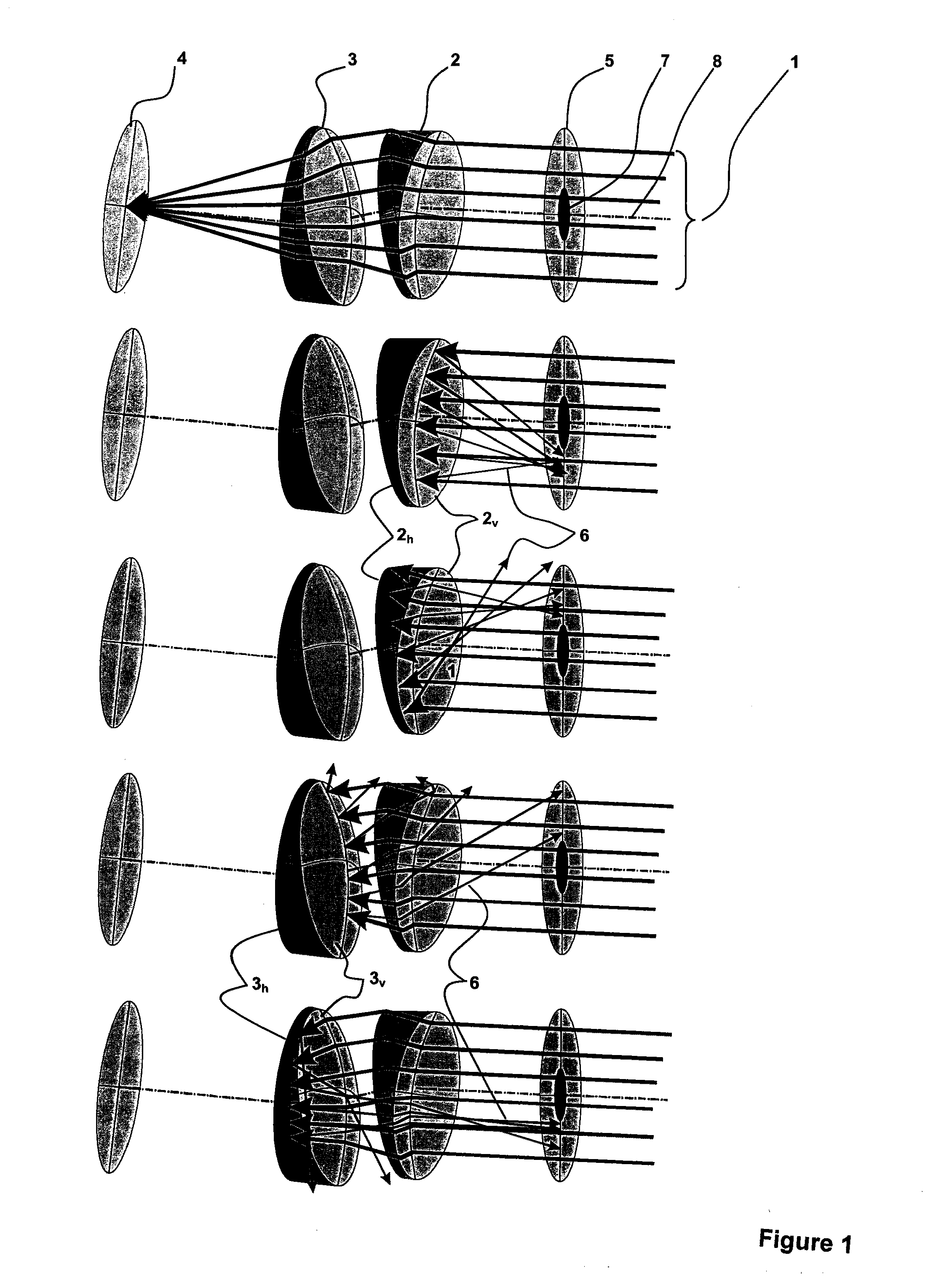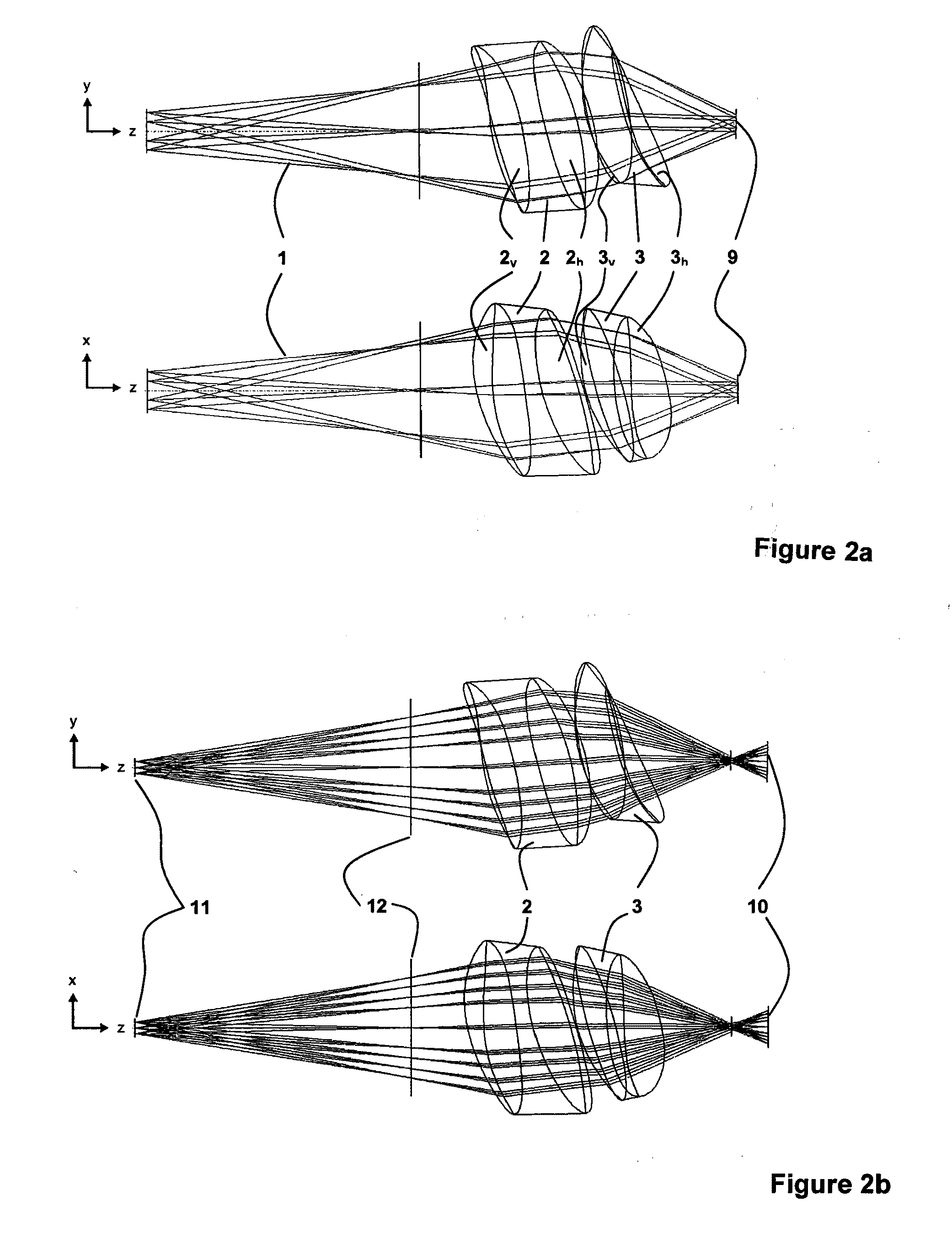Non-reflective imaging optics for optical devices, particularly in ophthalmology
a technology of optical devices and non-reflective imaging, which is applied in the field of ophthalmology, can solve the problems of negative effect of great working distance on the frame size of the mirror elements, and achieve the effects of good optical quality, large field of view, and great working distan
- Summary
- Abstract
- Description
- Claims
- Application Information
AI Technical Summary
Benefits of technology
Problems solved by technology
Method used
Image
Examples
Embodiment Construction
[0036]According to the invention, the non-reflective imaging optics for optical devices, particularly in ophthalmology, consist of at least two refractive optical elements, which are utilized for illumination as well as observation. Thereby, the at least two refractive optical elements are designed approximately wedge-shaped and are tilted at a random azimuth angle of at least 5° and / or are positioned off-center in the beam path in order to block out the single reflections of the illumination, occurring at the optical system surfaces, for the observation.
[0037]Tilting the refractive optical elements and / or their system surfaces refers to the tilting of optically active surfaces with regard to the reference axis in at least one azimuth. The reference axis is identical with the beam which runs through the center of the field stop and aperture diaphragm. Through tilting of a surface, the reference axis and the face normal form a nonzero degree angle at the intersection point of the ref...
PUM
 Login to View More
Login to View More Abstract
Description
Claims
Application Information
 Login to View More
Login to View More - R&D
- Intellectual Property
- Life Sciences
- Materials
- Tech Scout
- Unparalleled Data Quality
- Higher Quality Content
- 60% Fewer Hallucinations
Browse by: Latest US Patents, China's latest patents, Technical Efficacy Thesaurus, Application Domain, Technology Topic, Popular Technical Reports.
© 2025 PatSnap. All rights reserved.Legal|Privacy policy|Modern Slavery Act Transparency Statement|Sitemap|About US| Contact US: help@patsnap.com



